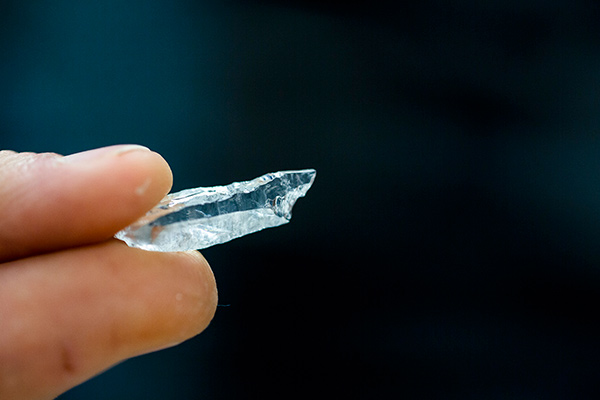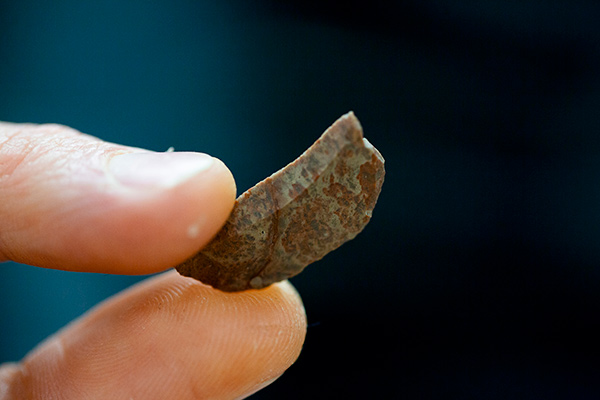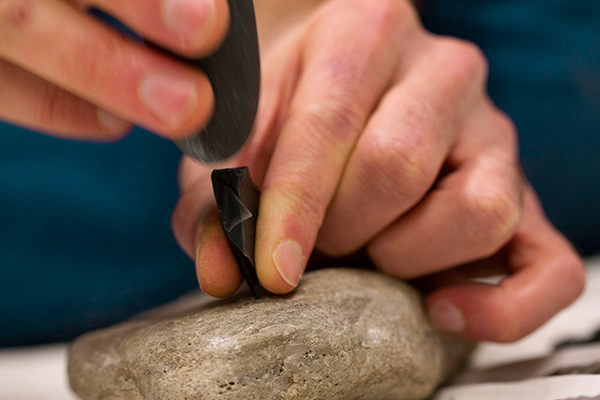Tiny Tools
The strange urge to make things smaller has paid off for humans in a big way

Anthropologists have long made the case that tool-making is one of the key behaviors that separated our human ancestors from other primates. A new paper, however, argues that it was not tool-making that set hominins apart—it was the miniaturization of tools.

Just as tiny transistors transformed electronics a few decades ago—and scientists are now challenged to make them even smaller—our Stone Age ancestors felt the urge to make tiny tools.
“It’s a need that we’ve been perennially faced with and driven by,” says Justin Pargeter (above), an anthropologist at Emory and lead author of the paper. “Miniaturization is the thing that we do.”

The journal Evolutionary Anthropology published the paper—the first extensive overview of prehistoric tool miniaturization. It proposes that miniaturization is a central tendency in hominin technologies going back at least 2.6 million years.
“When other apes used stone tools, they chose to go big and stayed in the forests where they evolved,” says co- author John Shea, professor of anthropology at Stony Brook University. “Hominins chose to go small, went everywhere, and transformed otherwise hostile habitats to suit our changing needs.”
The paper explores how stone flakes less than an inch in length—used for piercing, cutting, and scraping—pop up in the archeological record at sites on every continent, going back to some of the earliest known stone tool assemblages. These small flakes, Pargeter says, were like the disposable razor blades or paperclips of today—pervasive, easy to make, and easily replaced.

Pargeter makes tools himself to better understand how our ancestors learned these skills, and how they may have used the tools.
A native of South Africa, Pargeter codirects field work in that country along its rugged and remote Indian Ocean coastline and nearby inland mountains. He is also a postdoctoral fellow in Emory’s Center for Mind, Brain and Culture and the Department of Anthropology’s Paleolithic Technology Laboratory, where he collaborates on experimental archeology projects with the lab’s director, Dietrich Stout.
Pargeter’s work on tiny tools adds another facet to the lab’s investigation of human evolution. “He’s exploring what may have led to the compulsion to produce these tiny instrument—essentially the relationship between the tools and the human body, brain, and the probable uses of the tools,” Stout says.





